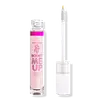What's inside
What's inside
 Key Ingredients
Key Ingredients

 Benefits
Benefits

 Concerns
Concerns

 Ingredients Side-by-side
Ingredients Side-by-side

Water
Skin ConditioningNiacinamide
SmoothingAlcohol Denat.
AntimicrobialPEG-40 Hydrogenated Castor Oil
EmulsifyingButylene Glycol
HumectantPhenoxyethanol
PreservativeCarbomer
Emulsion StabilisingHydrolyzed Lupine Protein
Skin ConditioningRicinus Communis Seed Oil
MaskingTocopheryl Acetate
AntioxidantSodium Hydroxide
BufferingEthylhexylglycerin
Skin Conditioning1,2-Hexanediol
Skin ConditioningCaprylyl Glycol
EmollientHexylene Glycol
EmulsifyingCopper Tripeptide-1
Skin ConditioningGlycerin
HumectantBiotin
AntiseborrhoeicHexapeptide-2
BleachingMyristoyl Pentapeptide-17
Skin ConditioningBenzoic Acid
MaskingSodium Benzoate
MaskingCI 16035
Cosmetic ColorantWater, Niacinamide, Alcohol Denat., PEG-40 Hydrogenated Castor Oil, Butylene Glycol, Phenoxyethanol, Carbomer, Hydrolyzed Lupine Protein, Ricinus Communis Seed Oil, Tocopheryl Acetate, Sodium Hydroxide, Ethylhexylglycerin, 1,2-Hexanediol, Caprylyl Glycol, Hexylene Glycol, Copper Tripeptide-1, Glycerin, Biotin, Hexapeptide-2, Myristoyl Pentapeptide-17, Benzoic Acid, Sodium Benzoate, CI 16035
Water
Skin ConditioningStyrene/Acrylates/Ammonium Methacrylate Copolymer
Polybutene
Butyrospermum Parkii Butter
Skin ConditioningPropylene Glycol
HumectantMangifera Indica Seed Butter
Skin ConditioningSimmondsia Chinensis Butter
Skin ConditioningTheobroma Cacao Seed Butter
EmollientPEG-100 Stearate
Glyceryl Stearate
EmollientDivinyldimethicone/Dimethicone Copolymer
Ammonium Polyacryloyldimethyl Taurate
Emulsion StabilisingPhenoxyethanol
PreservativeCaprylyl Glycol
EmollientXanthan Gum
EmulsifyingGlyceryl Dibehenate
EmollientArgania Spinosa Kernel Oil
EmollientGlycerin
HumectantButylene Glycol
HumectantPotassium Sorbate
PreservativeTribehenin
EmollientParfum
MaskingTocopheryl Acetate
AntioxidantSodium Laureth Sulfate
CleansingGlyceryl Behenate
EmollientDisodium EDTA
Arginine
MaskingSerine
MaskingGlutamic Acid
HumectantC12-13 Pareth-23
CleansingC12-13 Pareth-3
EmulsifyingTetrasodium EDTA
Silica
AbrasiveCitric Acid
BufferingWater, Styrene/Acrylates/Ammonium Methacrylate Copolymer, Polybutene, Butyrospermum Parkii Butter, Propylene Glycol, Mangifera Indica Seed Butter, Simmondsia Chinensis Butter, Theobroma Cacao Seed Butter, PEG-100 Stearate, Glyceryl Stearate, Divinyldimethicone/Dimethicone Copolymer, Ammonium Polyacryloyldimethyl Taurate, Phenoxyethanol, Caprylyl Glycol, Xanthan Gum, Glyceryl Dibehenate, Argania Spinosa Kernel Oil, Glycerin, Butylene Glycol, Potassium Sorbate, Tribehenin, Parfum, Tocopheryl Acetate, Sodium Laureth Sulfate, Glyceryl Behenate, Disodium EDTA, Arginine, Serine, Glutamic Acid, C12-13 Pareth-23, C12-13 Pareth-3, Tetrasodium EDTA, Silica, Citric Acid
Ingredients Explained
These ingredients are found in both products.
Ingredients higher up in an ingredient list are typically present in a larger amount.
Butylene Glycol (or BG) is used within cosmetic products for a few different reasons:
Overall, Butylene Glycol is a safe and well-rounded ingredient that works well with other ingredients.
Though this ingredient works well with most skin types, some people with sensitive skin may experience a reaction such as allergic rashes, closed comedones, or itchiness.
Learn more about Butylene GlycolCaprylyl Glycol is a humectant and emollient, meaning it attracts and preserves moisture.
It is a common ingredient in many products, especially those designed to hydrate skin. The primary benefits are retaining moisture, skin softening, and promoting a healthy skin barrier.
Though Caprylyl Glycol is an alcohol derived from fatty acids, it is not the kind that can dry out skin.
This ingredient is also used as a preservative to extend the life of products. It has slight antimicrobial properties.
Learn more about Caprylyl GlycolGlycerin is already naturally found in your skin. It helps moisturize and protect your skin.
A study from 2016 found glycerin to be more effective as a humectant than AHAs and hyaluronic acid.
As a humectant, it helps the skin stay hydrated by pulling moisture to your skin. The low molecular weight of glycerin allows it to pull moisture into the deeper layers of your skin.
Hydrated skin improves your skin barrier; Your skin barrier helps protect against irritants and bacteria.
Glycerin has also been found to have antimicrobial and antiviral properties. Due to these properties, glycerin is often used in wound and burn treatments.
In cosmetics, glycerin is usually derived from plants such as soybean or palm. However, it can also be sourced from animals, such as tallow or animal fat.
This ingredient is organic, colorless, odorless, and non-toxic.
Glycerin is the name for this ingredient in American English. British English uses Glycerol/Glycerine.
Learn more about GlycerinPhenoxyethanol is a preservative that has germicide, antimicrobial, and aromatic properties. Studies show that phenoxyethanol can prevent microbial growth. By itself, it has a scent that is similar to that of a rose.
It's often used in formulations along with Caprylyl Glycol to preserve the shelf life of products.
Tocopheryl Acetate is AKA Vitamin E. It is an antioxidant and protects your skin from free radicals. Free radicals damage the skin by breaking down collagen.
One study found using Tocopheryl Acetate with Vitamin C decreased the number of sunburned cells.
Tocopheryl Acetate is commonly found in both skincare and dietary supplements.
Learn more about Tocopheryl AcetateWater. It's the most common cosmetic ingredient of all. You'll usually see it at the top of ingredient lists, meaning that it makes up the largest part of the product.
So why is it so popular? Water most often acts as a solvent - this means that it helps dissolve other ingredients into the formulation.
You'll also recognize water as that liquid we all need to stay alive. If you see this, drink a glass of water. Stay hydrated!
Learn more about Water